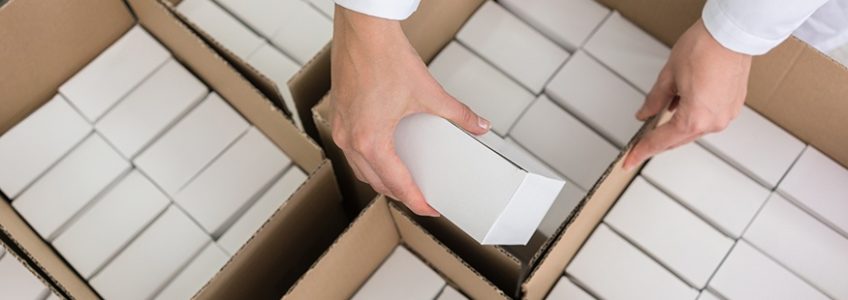
Kitting is a logistics strategy that consists of gathering the individual parts that make up a product and combining them to create a package or kit. This kit is then brought to other operators in the installation who will put together the final product. Because the life cycles of products are increasingly shorter, both the manufacturers and the clients demand more spare parts, replacements, and new pieces, which results in a greater need for warehousing space. Kitting can help alleviate this situation.
What is Kitting?
Kitting is a value-added service that refers to the process of collecting all the materials that make up a product and grouping them into a kit. The kit is subsequently delivered to the assembly lines to be assembled. This process for combining two or more components aims to lower costs and improve efficiency.
Kitting improves speed and lowers overall costs because we lower the assembly time and decrease the interruptions associated to individual production as we manufacture the kits. These kits usually have an independent SKU from those of the individual components. Likewise, we store and track them as a single unit.
Assembly-line workers themselves could go and get the components that make up the product. However, implementing a kitting strategy, with employees specialized in kit preparation, increases speed and reduces errors in the manufacture of the goods. For this method to be successful, a number of challenges need to be met.
One very simple example would be a pen company. In the warehouse, operators pick five SKUs:
- SKU01: barrel
- SKU02: cap
- SKU03: tip
- SKU04: ink
- SKU05: plug
None of these items can be marketed separately. Instead, once gathered together, they have to be sent to the assembly lines for the new SKU to be manufactured (SKU06, the pen). Accounting for these SKUs separately (both the pen and its parts) helps the company to monitor its stock more accurately.
Packed-to-Order Sets
Pack-to-order sets save time and money for the distribution center. Many online shops rely on this kitting process as a marketing strategy. For example, if you are purchasing a single wine glass, it is oftentimes more expensive than the cost of purchasing a set of four. This is because the packed-to-order sets require less time spent in packaging the product and the company is distributing more of its specified product.
Subscription Boxes
Subscription boxes have become increasingly popular in the digital age. Subscription services are usually made of many products and the boxes are not pre-packaged. Instead, it is assembled under product kitting. This sometimes also includes another method of kitting and assembly known as pick and pack. The picking process allows warehouse employees to pick through a set list of about ten items to prepare unique boxes with roughly 5 products in each subscription box.
Kitting: Neither Value-Added Nor Production Supply
You should not confuse the concept of kitting with the process of supplying the production lines or with value-added service (VAS). Kitting is a strategy with the aim of assembling the final product. Production supply, in contrast, simply deals with the supply of raw materials in manufacturing processes. VAS, on the other hand, consists of personalizing an item for an individual client. Although these three concepts might coincide on occasion, it is necessary to understand the differences between them, since they are implemented and developed in different ways.
- Production Supply. Some warehouses supply the production lines with the raw materials necessary to manufacture the products.
- VAS or Value-Added Services. In logistics, VAS relates to the transformation of a product to fulfill specific customer requests (for example, the screen-printing of a T-shirt with a personalized message).
When companies hire the services of 3PL outfits for this type of value-added service, they gain a series of benefits:
- More space, since employees have what they need when they need it and are no longer surrounded by components and materials.
- Eliminates lost time because employees no longer need to search for pieces and components so process time is lowered.
- Improves the safety of employees by lowering the number of pieces at the workspace.
- Lowers shipping errors and ensures a continuous improvement because kitting becomes a filter.
- Makes stock management and invoicing easier because it yields information on what type of pieces are needed and which should be ordered.
- Improves productivity and lowers labor costs because the manufacturing process starts outside the plant.
- Improves the flow of boxes, customization, and packaging.
- Lowers the number of suppliers.
Logistics at the Service of the Assembly Lines
The main goal of kitting is to optimize time and work on the assembly lines. Warehouse employees compile and group the necessary items ahead of time and send them to production at just the right time to prevent delays and interruptions to service.
To supply the assembly lines faster and more efficiently, the installation needs to be equipped with storage systems that facilitate the location and preparation of the SKUs comprising the kits. Kitting fulfills the product-to-person principle including stacker cranes and conveyors that automatically bring the goods to the operators.
The FLEX Logistics Team is Here to Help!
Our team understands the importance of getting your products to the market. That is why we aim to understand your business and build lasting relationships with you and your team. Whether you are looking to add a new warehouse to your existing operations, growing and need to increase your distribution efforts, or starting a new company, FLEX has the solutions to meet your supply chain needs.
Contact us today to discuss your current and future warehousing and logistics needs. We will work together with you to understand your requirements and develop a solution that will set you up for future success.
